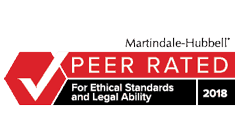


New York Bedsore Lawyer
Moving your parent or other loved one into a nursing home is never an easy thing to do. However, you felt the decision was the best thing for your family member to receive the care that he or she needs each day. You would be right to expect the staff to know about bedsores among the elderly and to ensure that no residents in their care suffer them. If such a problem did occur, you would also expect the staff to notify you right away. When this does not happen, it is typically because they are protecting themselves at the expense of your family member.
The Centers for Disease Control (CDC) reports that bedsores affect approximately 11 percent of the nursing home population. It is also a common reason for families to initiate a nursing home bedsores lawsuit. That is because most cases of bedsores, also called pressure sores or decubitus ulcers, are caused by neglect. People who cannot move independently depend on others to change their position as often as possible.
Bedsores And Pressure Sores
A bedsore is an injury to the skin and the tissues underneath it due to experiencing pressure for an extended time. People who spend most of their time in a wheelchair or in bed are most at risk of developing bedsores due to remaining in one position for hours or even days. Bedsores require prompt treatment for healing and some never heal at all. If your loved one has suffered the effects of bedsores due to negligence, a nursing home neglect lawyer at Jacob Fuchsberg Law Firm will seek financial compensation on his or her behalf.
Bedsore Symptoms
You may not recognize a bedsore for what it is at first, especially if you have never seen one in the past.
The following are the most common symptoms that residents and their families report to a bedsore lawyer:
- Draining pus
- One area of the skin feels warmer or cooler than other areas
- Parts of the skin feel tender
- Skin color changes
- Skin texture changes
- Swelling at the site of the bedsore
The depth and severity of the bedsore, along with other unique characteristics, determine its stage from one through four. Damage to skin and tissues can range from red and unbroken skin to a deep bone or muscle injury.
Common Pressure Sores Sites
The most common locations on the body for people who use a wheelchair include:
- Back of legs and arms due to resting against the chair
- Buttocks
- Shoulder blades
- Spine
- Tailbone
For nursing home residents who spend a lot of time in bed, bedsores are most likely to appear in the following places:
- Ankles
- Back of the head
- Heels
- Hips
- Left, right, or both sides of the head
- Lower Back
- Shoulder blades
- Skin behind the knees
How Do Bedsores Happen In New York Nursing Homes?
Turning an immobile person frequently is necessary to ensure proper circulation throughout the body. When a vulnerable person remains in one position for too long, it interrupts blood flow and the affected skin and tissues start dying. This leads to the development of an ulcerated sore, which violates the standard of care your family member is entitled to under the law. Our Manhattan nursing home neglect attorneys have worked with hundreds of families whose loved one suffered this entirely preventable injury.
Beside not repositioning residents often enough, not attending to the needs of incontinent residents quickly enough is a leading cause of bedsores among nursing home residents. This leaves the skin exposed to urine, which is highly acidic and can quickly begin breaking down the skin. This is not a minor annoyance as untreated bedsores can lead to infection and death. They are also painful and can develop very fast after a single act of negligence.
Stages Of Bedsores
If there is anything positive about bedsores, it is that they can usually be treated and healed when detected early. Unfortunately, a nursing home resident may get all the way to a Stage 4 bedsore before receiving a proper diagnosis. If the sore remains under clothing, you may not even know about it until it has progressed to the point of being extremely painful or untreatable. Below are the signs to look for at each stage.
Stage 1 Bedsores
Characteristics of the mildest form of bedsores include:
- Skin discoloration on the upper layer
- Sore to the touch
- Itching and/or burning sensation
- The area surrounding the bedsore does not turn pale when pressure applied, which indicates a lack of normal blood flow
- Minor difference in texture and temperature compared to other areas of skin
Stage 2 Bedsores
The untreated bedsore is progressing and displaying these symptoms:
- Noticeable pain from the skin ulcer
- Sore area of skin has broken through its top layer and some of the layer directly beneath it
- Open wound with a shallow appearance
- May or may not notice drainage
- Clear or yellow blister, with or without breakage
- Areas surrounding the skin may appear red, swollen, or the person may complain of soreness
Stage 3 Bedsores
A bedsore at the third stage has completely broken through the skin’s top two layers and penetrated the fatty tissue that lies below them. Signs to look for include:
- A foul odor
- The sore may resemble a crater
- Pus oozing from site
- Drainage that is not the normal color
Stage 4 Bedsores
Bed sores stage 4 are as serious as they can get. Common characteristics include:
- Extension beyond the subcutaneous fat into deep tissues such as ligaments, muscles, and tendons
- Severe cases can extend to the bone or cartilage
- Highest risk of infection of all stages of bedsores
- Victim is in extreme pain
- Drainage and tissues of dead skin visible
- Bone and muscles sometimes visible
- Skin may appear black
- Sore may have hardened and dead wound tissue
The Danger Of A Stage 4 Bedsore
As any nursing home neglect lawyer can attest, viewing a Stage 4 bed sore can be a shocking experience. It typically appears as a gaping and large area of dead and damaged skin and tissue. The bones, ligaments, tendons, fibers, and joints are often visible. In severe bedsore lawsuit cases, crusty tissues will surround the rotten and blackened sore because no one has cleaned them off.
A person with a bedsore will develop an infection once it reaches this late stage. Unfortunately, it is not always possible to recover. Typical complications include sepsis and cellulitis. It is critical at this point for your family member to receive treatment from a doctor experienced with advanced bedsores as a less experienced doctor could do more harm than good. You may also wish to contact a nursing home neglect attorney to pursue a medical malpractice claim at the same time.
Speak With A Bedsore Attorney For A Free Consultation
Handling Assisted Living And Nursing Home Cases With Experience And Compassion
At the Jacob Fuchsberg Law Firm in Manhattan, we have decades of experience bringing substantial lawsuits against nursing homes and assisted living facilities that failed to perform their responsibilities. We help our clients:
- Explore their options for moving forward with a negligence claim
- Obtain maximum compensation for their injuries and losses
- Work toward a sense of closure
- Understand how to address a Medicaid “non-event” issue
Managing partner Bradley S. Zimmerman has handled scores of cases involving bedsores, nursing home issues, and medical neglect. Brad and the firm’s other attorneys can provide strong representation that is geared toward resolution and results.
Every neglect case is different. Contact the Jacob Fuchsberg Law Firm to discuss your concerns in confidence. We will listen to you and give you an honest assessment of your case. If one of our attorneys represents you, your case will be given the attention it deserves, and you will be treated with respect. Serving New York State, Connecticut, and New Jersey (212) 869-3500.




















.avif)
resources

.svg)
.svg)


